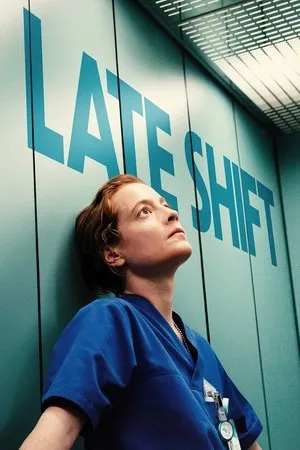The film “Late Shift” (2025) presents a gripping narrative set within the confines of a surgical department’s beds ward, offering a stark portrayal of the challenges faced by healthcare professionals in an understaffed environment. The story revolves around Floria, a nurse whose unwavering dedication to her patients is tested as the shift spirals out of control, leading to a dramatic climax. The film delves into the themes of understaffing, the pressures of patient care, and the emotional toll on healthcare workers. The opening scenes establish the setting, immediately immersing the viewer in the bustling and often chaotic atmosphere of a hospital ward. The visual elements, such as the sterile environment and the constant activity, contribute to the sense of urgency and tension. The introduction of Floria as the central character allows the audience to connect with her on a personal level, understanding her commitment to providing the best possible care despite the challenging circumstances. As the narrative unfolds, the film skillfully portrays the gradual descent into chaos. The understaffing issue becomes increasingly apparent, with nurses struggling to manage the workload and attend to the needs of all patients. The film highlights the difficult decisions that healthcare professionals must make when resources are limited, forcing them to prioritize and often compromise on the level of care they can provide. The emotional toll on Floria is palpable as she grapples with the mounting pressures. Her dedication to her patients is unwavering, but the constant stress and the inability to provide adequate care begin to take their toll. The film explores the psychological impact of working in such a demanding environment, shedding light on the burnout and emotional exhaustion experienced by many healthcare workers. The supporting characters in “Late Shift” add depth and complexity to the narrative. The interactions between nurses, doctors, and patients provide a realistic portrayal of the dynamics within a hospital setting. The film also touches on the personal lives of the characters, revealing their struggles and motivations outside of their professional roles. These glimpses into their personal lives add a layer of humanity to the story, making the characters more relatable and sympathetic. The dramatic outburst that serves as the climax of the film is a culmination of the mounting pressures and frustrations experienced by Floria. It is a moment of raw emotion that underscores the breaking point that can be reached when individuals are pushed to their limits. The film does not shy away from portraying the consequences of such an outburst, exploring the impact on Floria’s career and personal life. The resolution of “Late Shift” offers a glimmer of hope amidst the challenges. While the film does not provide easy answers or solutions to the systemic issues plaguing the healthcare system, it does highlight the importance of empathy, compassion, and resilience. The film suggests that even in the face of overwhelming odds, healthcare professionals can make a difference in the lives of their patients through their dedication and commitment. The film’s exploration of understaffing in the healthcare system is particularly relevant in today’s world. The shortage of nurses and other healthcare professionals is a global issue, with many countries facing significant challenges in providing adequate care to their populations. “Late Shift” serves as a reminder of the importance of investing in healthcare infrastructure and supporting the individuals who dedicate their lives to caring for others. The film’s themes of stress, burnout, and emotional exhaustion are also highly relevant to a wide audience. In today’s fast-paced and demanding world, many individuals experience similar pressures in their own lives. “Late Shift” offers a cathartic experience for viewers, allowing them to connect with the characters’ struggles and find solace in the shared human experience. The film’s realistic portrayal of the challenges faced by healthcare professionals is a testament to the filmmakers’ commitment to authenticity. The attention to detail in the depiction of the hospital environment, the medical procedures, and the interactions between characters adds to the film’s credibility and impact. The performances of the actors are also noteworthy, with each cast member delivering a nuanced and believable portrayal of their respective character. In conclusion, “Late Shift” (2025) is a compelling and thought-provoking film that offers a glimpse into the world of healthcare and the challenges faced by those who work within it. The film’s exploration of understaffing, patient care, and emotional toll on healthcare workers is both timely and relevant. Through its realistic portrayal of the characters and their struggles, “Late Shift” invites viewers to reflect on the importance of empathy, compassion, and resilience in the face of adversity. The film is a must-see for anyone interested in healthcare, human drama, or simply a well-crafted and emotionally resonant story.

Late Shift (2025)
In the surgical department's beds ward, a day unfolds with the nursing team stretched thin due to understaffing. Floria, a dedicated nurse, navigates the chaotic environment with expertise and unwavering commitment to her patients. However, despite her best efforts, the shift takes a turn for the worse, gradually descending into a state of disarray. Ultimately, the mounting pressures culminate in a dramatic and unforeseen outburst.











